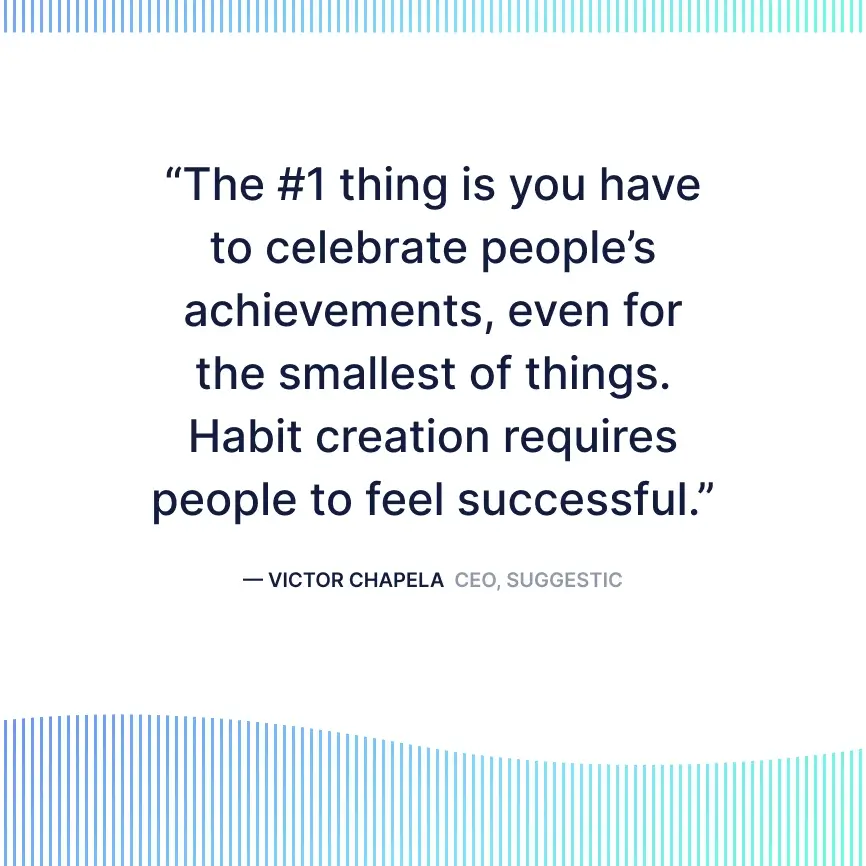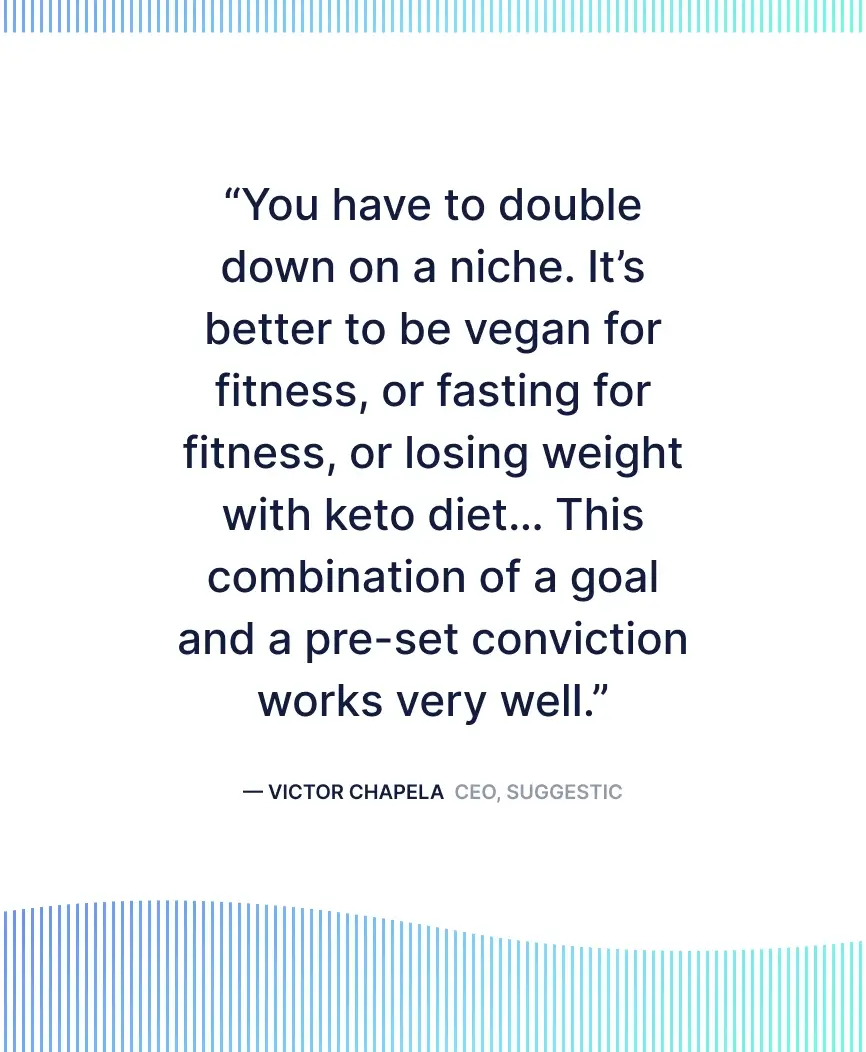I hosted a webinar a few weeks ago titled “Why do most nutrition apps suck?”.
I compiled the notes from the webinar and will publish them in two parts. This is part two, encompassing user engagement patterns, exploring the differences between food logging and behavior tracking, how the user’s individual psychology affects how they use the app, and more.
Part one covers beginner steps, explaining the best ways to launch a nutrition app, how to move on to monetizing in, and the best and worst business models for a nutrition app company.
My notes are below.
There are 200 thousand nutrition apps out there. Thinking that simply adding your new app to the app store will make people eventually find it and be fascinated by it is simply naïve. The probability that anyone will even see it is slim. In this post, I will take you through what makes a nutrition app valuable for the end-user – from learning how to be engaging to converting them into paying customers, from adapting to the psychologies of different potential app users to understanding different usage patterns.
Engagement: content or functionality
Engagement is more a function of content than it is of functionality. In Suggestic’s direct-to-consumer app where we curated programs by different authors, they all had the exact same functionality. However, the difference in their content made up to a 17x increase in conversion to paying customers.
Here is an example of two of our programs and how they performed.
- “Balanced diet” program – generic content, appealing to everyone, but no one in particular – 1% conversion rate to paying customers and short retention rate
- “Wheat Belly 10-day Grain Detox by Dr. William Davis” – specific, time limited – 17% conversion rate to paying customers and long retention rate (over 9 months on average)
This example teaches us that content is still the most important piece of the jigsaw. The reason for the drastic increase in conversion rate is not only that the audience already knew about Dr. Davis’ book (The Wheat Belly), but also the fact that users appreciated the shortness of the program and the possibility of quick results.
Despite the limited time frame, users kept coming back to repeat the program – some on a monthly, some on a more sporadic basis – and stayed devoted app users.
Content really is king when it comes to nutrition and lifestyle change apps. It fundamentally changes what people receive from the app. One might believe that the recipes and the meal planning are the most valuable, but what’s actually the most important is the way you relate to the user. It is all about how your app makes them feel and how they relate to the brand behind the content.
Food logging vs behavior tracking
Food logging fits a very narrow band of people since it is difficult and time-consuming. Suggestic has simplified food logging with a meal planner and implementation of restaurant meals. If the user follows a recipe or eats a specific restaurant meal, they can simply log that whole meal rather than every individual component.
There has been a fundamental change from food logging to behavior tracking. Nutrition apps now go beyond food.
As BJ Fogg points out in the book Tiny Habits, the most important thing for habit creation is to celebrate achievements as often as possible, even for the smallest of things. Habit creation requires people to feel successful. Feeling successful often causes a dopamine rush which causes a habit to form. The videogame industry, for example, takes advantage of this fact to keep its users coming back.
It is also very important to meet people where they are. There is a particular need to meet people where they are in relation to what they already expect. (Example from Suggestic’s DTC app: If a person came in with the idea of a vegan diet, and was offered a paleo diet, they would immediately jump out.) Giving people the ability to define what they already believe in (such as vegetarian or vegan, genome or microbiome) is very important to match at the beginning.
With the above also goes the importance of deepening on a niche. When Suggestic provided a wide range of all the different types of dietary interventions, it diluted our branding and diluted our ability to convince people that this was what they needed.
Since the market is huge, it is better to double down on a specific niche. If that works, you can always find a parallel niche later.
In creating a niche for a nutrition app, the combination of a goal (such as getting fit or losing weight) with a pre-set conviction (such as veganism, vegetarianism, or keto diet) works extremely well.
Examples: plant-based diet for fitness, fasting for weight loss, keto diet for better brain health…
Engagement patterns
At Suggestic, we have found that there are three fundamental engagement patterns for nutrition app users. Depending on which one of the groups the user belongs to, we can determine how often they will use the app and what is the content that will keep them engaged.
Transitioning users
These are people in the middle of a short-term health journey, which often starts with a life-changing event, such as diagnosis of an illness (prediabetes or diabetes, for example), being instructed to go on the low FODMAP diet, or deciding to lose weight. They are in the period of moving from how they used to eat to how they want to or think they must be eating. This period requires a lot of hand-holding since this transition is a process of learning. What these users most value is the shortness of their transition period.
Example from Suggestic’s DTC app: We first offered $100/year subscription to our users and experienced very low conversion. We decided to change the offer to $100 for a 10-day program and free subscription for a year, which saw the conversion rate going up to 17%.
The users in this group consume a lot of content, come back to the app often, need more support, and stay on the app if they have their daily achievements celebrated (even small things such as not drinking soda for a day).
Maintenance users
These are the most numerous users of nutrition apps. They consist of people who have already transitioned to a healthier lifestyle or have always been living healthily. They come to the app weekly, and their visits usually correspond with the need for meal planning, preparing shopping lists, looking up restaurants etc. You can convert these users back into daily users if you make them log habits to create streaks or give them other kinds of value.
Sporadic users
These users come to the app monthly or on an even more sporadic basis, usually to look for a recipe or to use the restaurant feature when they’re exploring, for example, a new town or new cuisines.
At Suggestic, our goal is to make people eat better and live healthier, which is why, even though we could be having the two latter groups of users coming back daily by using behavior tracking and streak retentions, that is not the goal.
The goal is to make the users permanently engaged with their new lifestyle and to implement our app as a part of this new lifestyle, even if that only means the users keep the app on their phones to occasionally look up a recipe or information about restaurant meals.
It is important to give value to all three groups of customers and create a brand outside the app that is synonymous with not only weight loss or intervention, but a healthy lifestyle for everyone.
More Resources:






